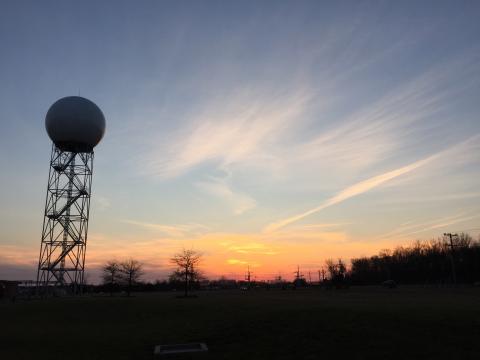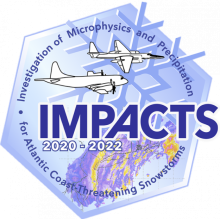
Join us to explore cloud-based data discovery, access, visualization, and analysis services at NASA's Global Hydrometeorology Distributed Active Archive Center.
Event Details
Presenter: Dr. Geoffrey Stano, GHRC DAAC
Event Date(s) and Time(s):
-
May 4, 2022 at 2:00 PM EDT - May 4, 2022 at 3:00 PM EDT
Location: Online
Hosted by: NASA EOSDIS
Organized by: EOSDIS Communications Team
Event Type: Webinar
More Information
The role of NASA’s Distributed Active Archive Centers (DAACs) has rapidly evolved over the past few years. Factors include the enormous growth in data volume, NASA’s Open Science goals, growth of cloud-based architectures to address these factors, and DAACs actively promoting the scientific use of Earth science data. NASA's Global Hydrometeorology Resource Center DAAC (GHRC DAAC) is a leader in the DAAC cloud transition. As the cloud pathfinder, GHRC was the first to host all holdings in the cloud. GHRC continues to develop cloud-based user services, both internally and in collaboration with other DAACs, to enhance the use of Earth science data. This presentation highlights four cloud-based user services at GHRC DAAC. These are Earthdata Pub (improving how data get to the DAACs), Bulk Downloader (improving data access by users), as well as the Lightning Dashboard and Field Campaign eXplorer (FCX) (improving data discovery, visualization, and analysis).
Register Now!









 The NASA Global Hydrology Resource Center (GHRC) DAAC published five additional NEXRAD IMPACTS datasets. These datasets consist of Next Generation Weather Radar (NEXRAD) Level II surveillance data that were collected at 31 NEXRAD sites from January 1 to March 1, 2020 during the Investigation of Microphysics and Precipitation for Atlantic Coast-Threatening Snowstorms (IMPACTS) field campaign. IMPACTS was a three-year sequence of winter season deployments conducted to study snowstorms over the U.S Atlantic Coast. The campaign aimed to (1) Provide observations critical to understanding the mechanisms of snowband formation, organization, and evolution; (2) Examine how the microphysical characteristics and likely growth mechanisms of snow particles vary across snowbands; and (3) Improve snowfall remote sensing interpretation and modeling to significantly advance prediction capabilities. There are currently 160 Weather Surveillance Radar-1988 Doppler (WSR-88D) or NEXRAD sites throughout the United States and abroad. These Level II datasets contain meteorological and dual-polarization base data quantities including: radar reflectivity, radial velocity, spectrum width, differential reflectivity, differential phase, and cross correlation ratio. The IMPACTS NEXRAD Level II data files are available in netCDF-4 format. It should be noted that this dataset will be updated in subsequent years of the IMPACTS campaign. It should be noted that the long range max range is 460km and the short range max range is 230km. But while the long-range config theoretically has a max range of 460km, once the beams get out that far, they are high above the Earth's surface so will only be able to detect the most intense storms and systems at the longer ranges.
The NASA Global Hydrology Resource Center (GHRC) DAAC published five additional NEXRAD IMPACTS datasets. These datasets consist of Next Generation Weather Radar (NEXRAD) Level II surveillance data that were collected at 31 NEXRAD sites from January 1 to March 1, 2020 during the Investigation of Microphysics and Precipitation for Atlantic Coast-Threatening Snowstorms (IMPACTS) field campaign. IMPACTS was a three-year sequence of winter season deployments conducted to study snowstorms over the U.S Atlantic Coast. The campaign aimed to (1) Provide observations critical to understanding the mechanisms of snowband formation, organization, and evolution; (2) Examine how the microphysical characteristics and likely growth mechanisms of snow particles vary across snowbands; and (3) Improve snowfall remote sensing interpretation and modeling to significantly advance prediction capabilities. There are currently 160 Weather Surveillance Radar-1988 Doppler (WSR-88D) or NEXRAD sites throughout the United States and abroad. These Level II datasets contain meteorological and dual-polarization base data quantities including: radar reflectivity, radial velocity, spectrum width, differential reflectivity, differential phase, and cross correlation ratio. The IMPACTS NEXRAD Level II data files are available in netCDF-4 format. It should be noted that this dataset will be updated in subsequent years of the IMPACTS campaign. It should be noted that the long range max range is 460km and the short range max range is 230km. But while the long-range config theoretically has a max range of 460km, once the beams get out that far, they are high above the Earth's surface so will only be able to detect the most intense storms and systems at the longer ranges.



